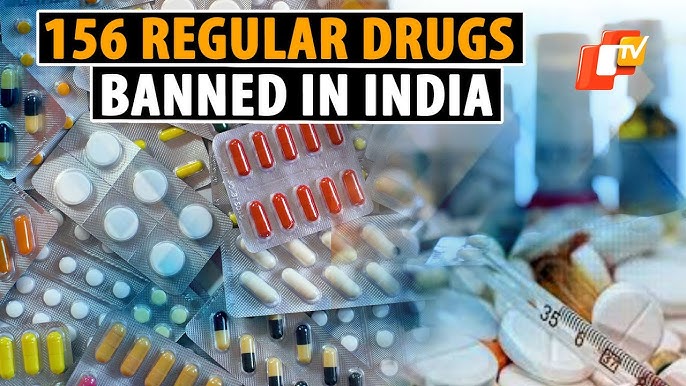“The irrationality of a thing is no argument against
its existence, rather a condition of it.”
Each and every year while going through a number of literary works like
articles, editorials, magazines, periodicals, newspaper etc., we generally came
across some rankings related to Global Index, majorly concerning health like
Global Health Index, Global Hunger Index, Human Development Index etc. Therefore, it can be concluded
that the importance of health has grown to the point where different national
and international health organizations support and disseminate the creation of
these indices.A nation's social and economic development is influenced by its
health in a number of ways, including circle growth, lower healthcare costs,
absenteeism, improved human capital, sparked innovation, balanced birth rates
and consequently higher productivity, etc.A potent instrument for leveling the
playing field and bending the national trajectory away from distress and
disparity and back towards equity and justice is public health.
What in recent highlights?
The
Ministry of Health and Family Welfare has banned the manufacture, sale, and
distribution of 156 fixed dose combinations(FDCs)1. These
include treatments for common ailments like cold and fever. An Expert Committee
and the Drugs Technical Advisory Board found no therapeutic justification for
these combinations and identified potential health risks, leading to the
prohibition.
But if we look into that
what are FDCs?
FDCs
are medications that come in the form of a single pill, capsule, or shot and
contain multiple active ingredients, which are chemical components in
medications that have an impact on the body. FDCs are designed for patients who
require frequent administration of numerous medications, such as those with
diabetes and tuberculosis. FDCs help increase adherence to treatment by
lowering the amount of pills the patient needs to take on a daily basis.
The
Drugs Controller General (India) [DCGI] must get permission for each new drug
before State Licensing Authorities (SLAs) can grant a license for its
production and sale throughout the nation. FDCs are regarded as "New
Drugs" since they are combinations of certain medications that are put
together for the first time. Numerous SLAs issued licenses to a few new FDCs
without the DCG (I)'s permission based on evaluations of safety, efficacy, and
logic. As a result, several FDCs were made available on the Indian market
without anyone being aware of their efficacy or safety for the populace there.
Historical
aspects :
Despite
the fact that FDCs have been known to exist in the Indian market since the
1960s, attempts to control them began in 1988 as a result of the Drug & Cosmetic
Act of 1940's revised regulations.Even the CLA's own clearance procedures for
new pharmaceuticals had flaws, as the 59th Parliamentary Standing Committee
discovered in the middle of 2012. These flaws included the CLA's complacency in
adhering to its own standards, as well as a lack of clarity and transparency in
the selection of experts and the examination of new drugs.
Some recent banned demographics that can be stated are as
follows:
Ø
344
FDCs in 2016
Ø
37
FDCs in 2017
Ø
328
FDCs in 2018
Ø
156
FDCs in 2024
The
medications, also known as pharmaceutical components, are essentially carefully
prepared substances with established health advantages for human usage at
specific quantities. In order for a drug to be approved for sale, its
therapeutic benefits must outweigh its side effects. Additionally, accurate
documentation of the dosage amounts (calculated as milligrams per kilogram of
body weight), frequency of dosages, and total duration of use necessary for
therapeutic efficacy must also be provided.
The legal prospectus:
In view of regulation, all FDCs fall under the
category of "new drug" due to the variation in the safety and
effectiveness limits of combination forms. As such, they require prior approval
from the Central Drugs Standard Control Organization (CDSCO) following the submission
of documentation demonstrating the therapeutic benefit, additional advantage,
and safety profile.
Schedule Y, which was established in 1988 under the Drug & Cosmetics Act of
1940, outlined these procedures. The Central Licensing Authority (CLA), CDSCO,
reviews pertinent pharmacological studies, including bioequivalence, safety
profile, and paperwork pertaining to the original clinical trials, before
approving the FDCs in accordance with Rule 122E of the same statute. The State
Licensing Authorities (SLAs) are only able to grant licenses for the import,
manufacturing, marketing, and sales of a specific FDC once the CLA has approved
it.
The allied provisions under the Drug & Cosmetics Act,
19402 are listed below:
Chapter IV :MANUFACTURE. SALE AND DISTRIBUTSION OF DRUGS AND COSMETICS
SECTION 16. Standards
of quality.
SECTION 18.Prohibition
of manufacture and sale of certain drugs and cosmetics
SECTION 26A. Powers of
Central Government to regulate, restrict or prohibit manufacture, etc., of drug
and cosmetic in public interest.
SECTION 26B. Powers of Central Government to
regulate or restrict, manufacture, etc., of drug in public interest.
SECTION 27. Penalty for manufacture, sale,
etc., of drugs in contravention of this Chapter.
SECTION 28B. Penalty
for manufacture, etc., of drugs or cosmetics in contravention of section 26A
What might occur, then, if you ingest one of these
prohibited FDCs?
It's no secret that thousands
of people may have already used these medications throughout their years on the
market. It is probably not going to hurt to have one now.
So why was their prohibition necessary?
Since the chemicals in these "irrational" combinations either don't
work well together or aren't necessary for patients to take together, they have
been outlawed.
One of the main justifications is to remove antibiotic combinations off the
market since overuse of these drugs might exacerbate antibiotic resistance,
which requires stronger or higher dosages of antibiotics to cure even minor
infections.
A research conducted in 2023
discovered that, in spite of the previous prohibitions, the percentage of FDCs
in all antibiotics sold in India had climbed from 32.9% in 2008 to 37.3% in
2020.
According to the report, India has one of the largest markets for FDCs
worldwide, many of which may not have been appropriate. According to the
analysis, 41.5% of the 4.5 billion standard units of antibiotic FDCs marketed
in India in 2020 came from combinations that the WHO has classified as
"not recommended."
The price cap on necessary medications is an additional justification for the
prohibition. The average market price is used by the government to determine
the maximum price for certain medications. Businesses have a history of using
FDCs to get around the price control system.
Conclusion:
The
Government of India seeks to create health systems that are efficient in all
respects in order to achieve the best possible standard of health and
well-being for everyone, as indicated in the National Health Policy 2017. While
the central government is working to achieve these goals through a number of
initiatives, including the ambitious implementation of Ayushman Bharat and
price controls on drugs and medical devices, the government also has to address
issues related to pharmaceuticals. The latest incident with unreasonable FDCs
brings up a significant worry. The government has had a great deal of
difficulty in dealing with illogical medications, particularly when these
treatments never should have been on the market in the first place.
Given
that FDCs account for over half of the local pharmaceutical market, which is
valued at over INR 1,000 billion, the government should take serious action to
address concerns over the prevalence of illogical FDCs.
It
is hoped that since the Supreme Court is currently considering the case, it
would consider the grave consequences for public health that come with selling
such medications and permit regulatory action that forbids the sale of
uncertified combination pharmaceuticals. and will fortify the main component of
a State.
___________________________________________________________________________
1 https://economictimes.indiatimes.com/industry/healthcare/biotech/pharmaceuticals/govt-bans-156-medicines-including-antibiotics-painkillers-multivitamins-here-is-the-full-list/articleshow/112740385.cms?from=mdr
2 https://www.indiacode.nic.in/bitstream/123456789/15278/1/drug_cosmeticsa1940-23.pdf




